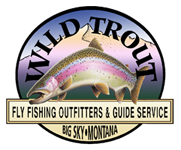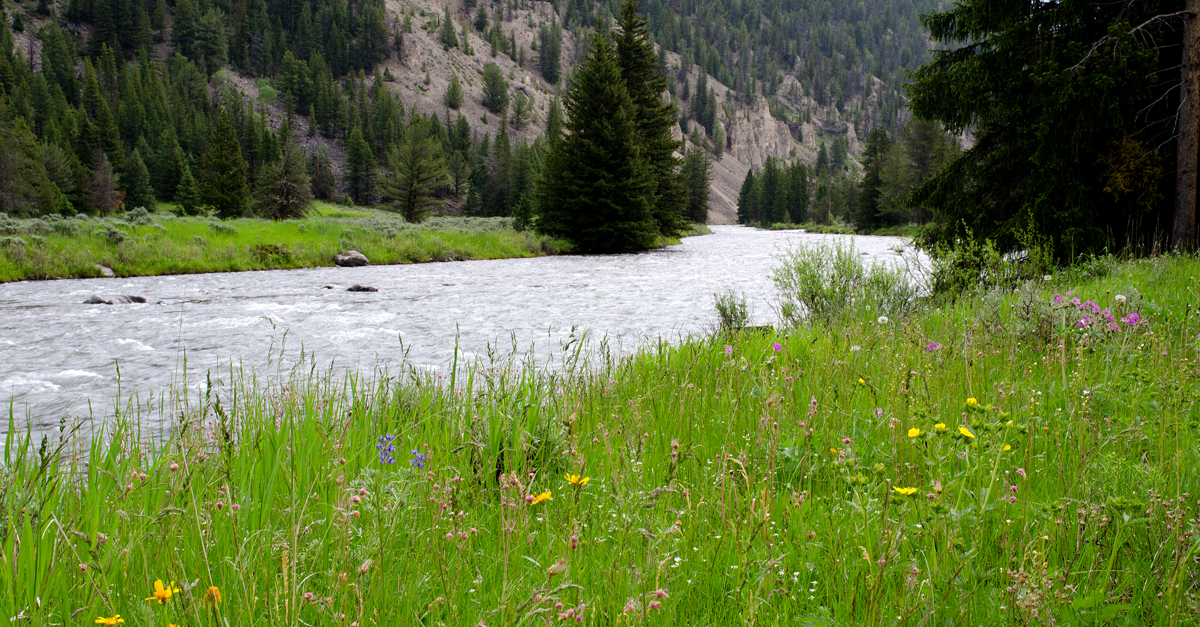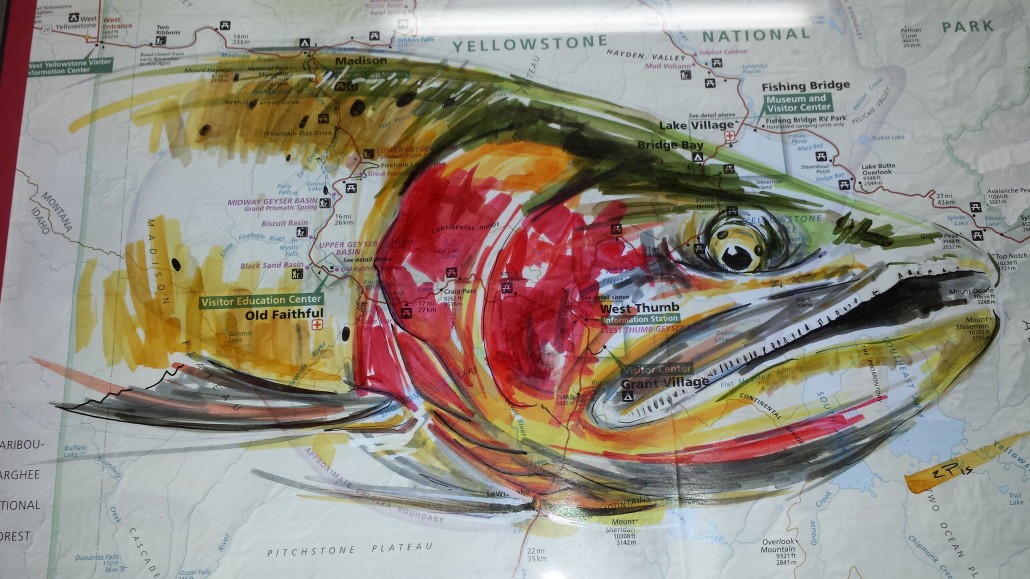GALLATIN RIVER FISHING REPORT
The Gallatin is in great shape from its headwaters in Yellowstone National Park down to the mouth of Gallatin Canyon. The river is settling into summer form and is becoming increasingly easier to wade. Dry fly opportunities abound, but nymphing is most productive.
First things first… the middle and upper reaches of the Gallatin River are in great shape with cold water and happy fish. As some of you may have read, Montana Fish, Wildlife & Parks has placed “hoot-owl” restrictions on the lower reaches of the river. From Shed’s Bridge (the bridge at Four Corners, just west of Bozeman) down to the mouth of the river, fishing is closed daily from 2pm to midnight due to warm water temperatures and low flows. This portion of the river suffers from severe dewatering for irrigation, something that we’re fortunate not to have to contend with on the middle and upper reaches of the river.
The middle and upper reaches of the Gallatin are fishing very well right now, with dry fly action early and late (and sporadically throughout the day if you’re willing to stick with it) and a consistent nymph bite all day long. We’re seeing good action on caddis, particularly in the mornings with a simple X-Caddis or Elk Hair Caddis in size 16. Yellow sallies are out, and anglers can pick up fish on a yellow-bodied Stimulator in size 14. PMDs are emerging daily as well and anglers should come prepared with a handful of Sparkle Duns in sizes 16 and 18. The bulk of salmonflies and golden stoneflies have moved upriver, south of Big Sky, but some stragglers can still be found throughout the canyon and the fish will still take large stonefly dries on occasion. With all of the bugs on the water the attractor dry-fly fishing has been good, particularly those patterns of the down-wing variety (roughly imitating caddis and stoneflies). For this reason Trudes and Stimulators in various colors and sizes have been effective. As for the nymph bite, the bigger stoneflies have been of less importance lately and we’re seeing a shift towards caddis and mayfly patterns along with some action on yellow sally nymphs.
As runoff has subsided, the fish have returned to familiar haunts such as the Grasshopper Hole, Glacier Rock Hole, the Slick, Gilligan’s Island and many others. These aren’t places you’ll find on any map, but rather the names that our guides have bestowed upon some of the river’s best fishing holes. If you’re interested in having one of our guides show you the best of what the Gallatin has to offer, drop us a line or give us a call (800-423-4742) to book your dream trip and let us do what we do best… put people on fish!
Dries: Flutter Bug #6-8, Cat Puke (salmonfly & golden stonefly) #6-10), Rogue Stone (salmonfly and golden stonefly) #6-10, Chubby Chernobyl (Golden) #8-10, Stimulator (Yellow) #10-14, Elk Hair Caddis (Yellow/Tan/Olive) #14-16, X-Caddis (Olive) #14-16, Lime Trude #14-16, Sparkle Dun (PMD) #16-18, Purple Haze #14-18
Nymphs: Pats’ Rubber Legs #8, Mega Prince #8, San Juan Worm (Red) #12, CDC Pheasant Tail #16-18, Pheasant Tail #16-18, Lightning Bug #16-18, Copper John #14-16, Beadhead Yellow Sally #14, CDC Emerger #14-18, Shop Vac #16
Streamers: Sparkle Minnow #4-6, Bow River Bugger #4-6, Home Invader #2-6, McCune’s Sculpin#4, Gonga #4. Be sure to have an array of colors represented in your streamer box including: white, yellow, olive, natural/tan, and black.
UPPER MADISON FISHING REPORT
The upper Madison is fishing very well. The dry fly fishing has been good, and salmonflies are still in play.
It’s not too late to get in on the salmonfly hatch on the upper Madison. The main hatch has moved into the walk/wade section above Lyons Bridge, but there are still plenty of stragglers on the upper end of the float stretch. The hatch seems to be progressing upriver a bit slower than usual, perhaps due to colder releases out of Hebgen Dam this year (for the first time in several years the dam is releasing water from the bottom of the reservoir).
Flows have been lower than we’re accustomed to seeing at this time of year. Flows out of Hebgen Dam were as low as 450 cfs earlier this week, but have since bumped up to about 750 cfs. At these levels wading anglers are able to safely reach water that is typically inaccessible. The fish are stacked up in some of the larger, deeper runs, but they’re also pretty well distributed throughout the smaller pockets from bank to bank. It’s a pretty safe bet that nearly every fishy looking seam, riffle, and pocket is holding fish right now.
In addition to the aforementioned salmonfly action, we’re seeing good numbers of golden stoneflies, caddis, yellow sallies, and PMDs on the water. A double-dry fly rig consisting of a larger stonefly up front, trailed by a Sparkle Dun or a hair-wing caddis pattern has been effective. Smaller attractor dries such as a Trude or Humpy are producing as well. But a dry-dropper rig – or better yet a double-nymph rig – will produce with more consistency. Top nymphs lately have included the venerable Pheasant Tail, Lightning Bug (as well as soft-hackle versions of these), Crystal Dip, $3 Dip, Shop Vac, Copper John, Two-Bit Hooker, Military Mayfly, and Anato-May. Stonefly nymphs will still produce at times, particularly up high ahead of the main salmonfly hatch, but we’re definitely seeing a shift towards smaller caddis and mayfly nymphs.
Nymphs: Pats’ Rubber Legs #8, Mega Prince #8, Pheasant Tail #16-18, Soft-Hackle Lightning Bug #16-18, Lightning Bug #16-18, Shop Vac #16, $3 Dip #16-18, Crystal Dip #16-18, Anato-May #16, Military May #16, San Juan Worm #12
Dries: Flutter Bug #6-8, Cat Puke (salmonfly & golden stonefly) #6-10, Rogue Stone (salmonfly and golden stonefly) #6-10, Chubby Chernobyl (Golden) #8-10, Stimulator (Yellow) #10-14, Elk Hair Caddis (Yellow/Tan/Olive) #14-16, X-Caddis (Olive) #14-16, Lime Trude #14-16, Sparkle Dun (PMD) #16-18,
Streamers: Sex Dungeon #4, Circus Peanut #4, Barely Legal, Sparkle Minnow #4-6, Bow River Bugger #4-6, Home Invader #2-6, McCune’s Sculpin#4, Gonga #4. Be sure to have an array of colors represented in your streamer box including: white, yellow, olive, natural/tan, and black.
YELLOWSTONE RIVER FISHING REPORT
The Yellowstone is fishing very well and has quickly transitioned from post-runoff mode to summer conditions. The salmonfly hatch has moved into Yellowstone National Park.
The Yellowstone looks great, from top to bottom. Now that the salmonflies have moved up high into Yellowstone National Park, the lower reaches of the trout water are now getting more attention. Below Livingston the river has dropped enough to offer safe rowing conditions and the fishing is great! The bulk of the action is subsurface on nymphs and streamers, but for those willing to stick with the dry fly – or at least have a dry fly rod rigged and ready – there will be opportunities to take fish throughout the day. Caddis, PMDs and yellow sallies are the main attraction, but don’t be afraid to try throwing some larger stonefly or attractor patterns.
The salmonfly hatch is now in Yellowstone National Park. This weekend would be an excellent time to hike into the Black Canyon of the Yellowstone for excellent dry fly fishing to large cutthroat trout. And even if there aren’t many naturals around, floating anglers can undoubtedly still get plenty of cutthroat to rise to a salmonfly or golden stone pattern below Gardiner this weekend.
Dries: Flutter Bug #6-8, Cat Puke (salmonfly & golden stonefly) #6-10), Rogue Stone (salmonfly and golden stonefly) #6-10, Chubby Chernobyl (Golden) #8-10, Stimulator (Yellow) #10-14, Elk Hair Caddis (Yellow/Tan/Olive) #14-16, X-Caddis (Olive) #14-16, Lime Trude #14-16, Sparkle Dun (PMD) #16-18, Purple Haze #14-18
Nymphs: Pats’ Rubber Legs #8, Mega Prince #8, San Juan Worm (Red) #12, CDC Pheasant Tail #16-18, Pheasant Tail #16-18, Lightning Bug #16-18, Copper John #14-16, Beadhead Yellow Sally #14, CDC Emerger #14-18, Shop Vac #16
Streamers: Sex Dungeon #4, Circus Peanut #4, Barely Legal, Sparkle Minnow #4-6, Bow River Bugger #4-6, Home Invader #2-6, McCune’s Sculpin#4, Gonga #4. Be sure to have an array of colors represented in your streamer box including: white, yellow, olive, natural/tan, and black.
YELLOWSTONE NATIONAL PARK FISHING REPORT
The Firehole and Madison have warmed considerably and are largely out of play for anglers. The Gibbon remains a productive option on the west side, and the entire Yellowstone watershed is rounding into shape.
The Firehole and Madison in the park have warmed considerably and are no longer good options. The Gibbon River is fishing well along its entire length, providing a good option for anglers on the west side of the park. Further north, the Yellowstone is in prime shape with salmonflies and golden stoneflies hatching throughout the canyon reaches. The Yellowstone’s tributaries including the Lamar River and Slough Creek are now in fishable shape with emergences of PMDs and drakes bringing trout to the surface.
Give us a call (800-423-4742) to discuss planning your own trip.
Dries: Adams #18-20, Sparkle Dun – Olive (baetis), Yellow (PMD) #18-20, Purple Haze #18-20, Light Cahill #16-18
Nymphs: Pheasant Tail #18-20, Soft-Hackle Pheasant Tail #18-20, CDC Emerger #18-20, Partridge & Olive Soft Hackle #18-20, Lightning Bug #18-20, WD-40 #18-20, RS-2 #18-20, Pat’s Rubber Leg #8




